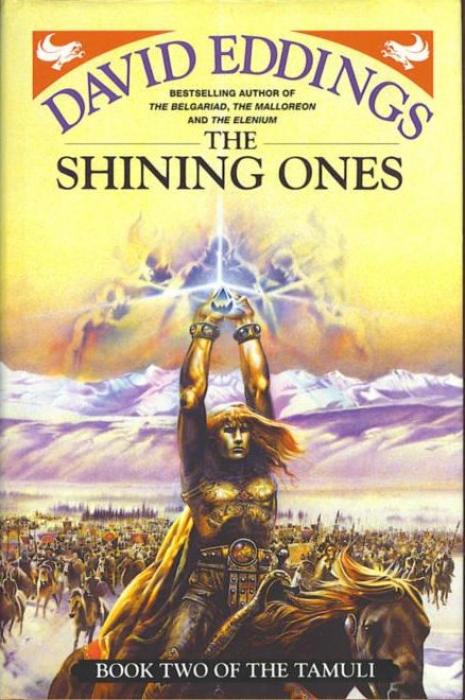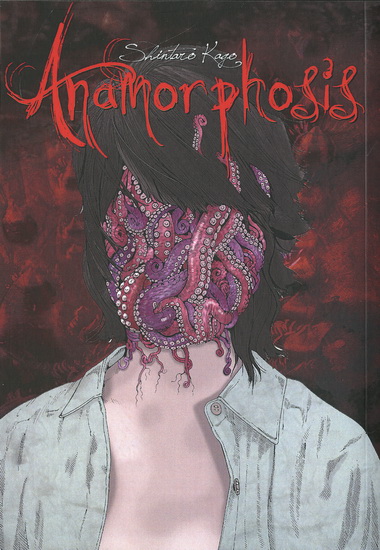 This is the most pointless and boring fantasy series that I’ve read BY FAR. Even if it possessed one small testicle and had podiatric contact with a single withered buttock it would have more balls and kick more ass than it does now, which is none and more none, respectively.
This is the most pointless and boring fantasy series that I’ve read BY FAR. Even if it possessed one small testicle and had podiatric contact with a single withered buttock it would have more balls and kick more ass than it does now, which is none and more none, respectively.
The Tamuli is a series of three books featuring the character Sparhawk, who appeared in a previous Eddings trilogy called The Elenium. The Elenium was a feeble fantasy series in its own right, lightly fingering the reader when he wants to be fistfucked, but it had good characters and snappy dialogue.
This has good characters and snappy dialogue, too, but the story is rotten and decrepit to the core. These books run about a thousand pages in paperback, and I am unable to care about anyone or anything in them. There are journeys to strange lands and invocations of mighty magic, and they bore me. The Tamuli shows us how to do less with more – how write a book about gods and wizards and the end of the world…and make the reader yawn. Remarkable.
The book suffers from the same problem that torpedoed Brian Jacques Redwall series: villains that aren’t a challenge to the protagonist. Eleizer Yudkowski once advised fanfiction writers “You can’t make Frodo a Jedi unless you give Sauron the Death Star.” In this book, Sauron is a Jedi and Frodo has the Death Star. The heroes are always ten steps ahead of the villains. Battles are easy squash matches. Gods are on Sparhawk’s side. Spawhawk himself has the powers of a god. What gives? Miss Marple is at greater risk in her investigations than these guys.
Mostly, The Tamuli is a series of tedious happenings, and an overburdened edifice of a plot that’s sagging inward under its own weight. It’s never clear how much significance to assign to specific plot points. You don’t know whether they’re vital clues or filler…and there’s filler in abundance.
We get scenes about the wacky love life of Bevier, or the anthropology of the Tamul empire, and David Eddings’ fem-dom fetish. There’s a female warrior called Mirtai, and Eddings’ frequently reminds us of how powerful and strong she is (and how she’s a match for any man) in rapturous fantasies normally reserved for paid membersites with “goddess” in the URL. Enough, man. Getting creepy here.
Even more irritating is that he cuts interesting things out of the book. In The Hidden City it’s mentioned in passing that a huge battle has been won against Cyrgai troops. I might have been interested in that. Instead, I get it second hand. I’m reminded of when I was a child, and listened to an audiobook of CS Lewis’s The Horse and His Boy – with the climactic battle scene cut out to save space on the tape.
There’s lots of happenings and lots of detail in these books, and it all seems like the buzzing of flies. The Tamuli can be compared to a plate of mashed potato. Lots of crags and valleys and hills. Lots of interesting things if you’re a potato aficiando. For the rest of us, it is a lump of mashed tuber.
 They used to ask the foul-mouthed “do you kiss your mother with those lips?” For Japanese mangaka Shintaro Kago, the equivalent is “do you think about your mother with that brain?” This guy has made a career of being fucked in the head, and the Shintaro Kago Mental Pathology Express keeps on rolling down the tracks with Anamorphosis, yet another collection of the bizarre and the grotesque.
They used to ask the foul-mouthed “do you kiss your mother with those lips?” For Japanese mangaka Shintaro Kago, the equivalent is “do you think about your mother with that brain?” This guy has made a career of being fucked in the head, and the Shintaro Kago Mental Pathology Express keeps on rolling down the tracks with Anamorphosis, yet another collection of the bizarre and the grotesque.
The centerpiece is a long-winded parody of House on Haunted Hill. A group of people must stay on a haunted movie set for 48 to win a bet. Not his most satisfying work, but quite enjoyable if you like black comedy and macabre slapstick. Unusually elaborate for Kago, too. It’s not every day he writes something that needs a dramatis personae. It also has a fair few kaiju/monster movie references, and the result is amusingly syncretic – as if Vincent Price and Godzilla had a baby together (in the world of Kago’s manga, such a thing is definitely possible.)
The rest of the volume contains a bunch of Kago one-shots. “Bishoujo Tantei Tengai Sagiri” is about a female detective who must solve a ludicrous murder. “Rainy Girl” stars a girl who attracts rain wherever she goes, and the complications this brings to her sex life. “A Small Present” returns to Kago’s much-loved theme of infant murder. “Hikikomori” is about students refusing to attend school – with nauseating results. Kago’s gross-out work gets all the press, but he’s a talented satirist, too. “Behind” uses a common real-life fear – doctors leaving surgical tools inside their patients – as its kick-off point, although obviously he takes it to strange and unwholesome conclusions.
“Previous Life” is rather clever. A girl is possessed by a snake, and a spiritualist discovers it’s because one of her ancestors killed a lot of snakes (karma, etc). Fortunately, the spiritualist is able to go back in time and stop the snake killer in his tracks. The girl’s sister sees a business opportunity, and manipulates other peoples’ pasts to help them succeed in the present. She has an swimmer’s ancestor kill lots of fish to improve her time in the Olympics. She has a mangaka’s ancestor kill lots of mangaka to improve his drawing skills (there’s a funny panel with Tezuka et all getting blasted with a shotgun). She also has her own ancestor kill buxom women so that she’ll have big tits (her father: “I wanted her to stay flat.”).
“Salesman” is about a girl who approaches the forlorn, and, rather than save them, helps them commit suicide in the most efficient way possible. “Changes” is a freaky gross-out story, archetypically Kago. “Weightlessness” is the volume’s finest moment. Such an unprepossessing little story, but the reveal at the end really took me by surprise.
The nice thing about Kago is that his comics, offensive subject matter or no, are always accessible and user-friendly. There’s none of the abstract Boschian ramblings of Usamaru Furuya’s Garden or the dizzying web of imagery that’s Suehiro Maruo’s Paranoia Star or any of the other excesses of most products described as extreme manga. Only Junji Ito beats him in mainstream appeal. With the title story Kago diverts a bit from his normal path, and it’s no coincidence that “Anamorphosis” is the only part that drags. Kago’s at his best when he’s on a roll – hitting you with shock after shock, not letting you breathe. The title story requires him to devote page time to subplots and characters, and you can feel some of his usual manic energy ebbing away.
But never mind. Kago’s a consistently entertaining mangaka, and Anamorphosis is another superior product from him. Step right up, and join the Kago Kult.
 In 2012, a book came out that changed everything. It rose from the dreck like a dark grimoire of power, incipient and wrathful, ready to turn doubters into believers and believers into zealots. A book that shattered your expectations, remade them, and shattered them again. You finished the book a broken and humbled man, with one thought resounding in your skull. “So that’s why my knitted cardigans weren’t up to scratch.”
In 2012, a book came out that changed everything. It rose from the dreck like a dark grimoire of power, incipient and wrathful, ready to turn doubters into believers and believers into zealots. A book that shattered your expectations, remade them, and shattered them again. You finished the book a broken and humbled man, with one thought resounding in your skull. “So that’s why my knitted cardigans weren’t up to scratch.”
This, however, is not a review of Knitting from the Center Out: An Introduction to Revolutionary Knitting. It’s about another book altogether, Necrology.
Half of the book is written by Creation Books darling Kenji Siratori. My first exposure to this overrated fuck was Nonexistence, a clown car pileup of nonsensical words pretending to be an cyberpunk novel. I thought Siratori was a troll then, and I think he’s a troll now. You can search online for samples of his prose, but suffice to say he’s heavily inspired by William S Burroughs and other experimental authors. He seems to have reduced some of his worst excesses, but he is still not a readable writer by any sane standard. I hope to forget about him soon and often.
The other half is by Gary J Shipley, a man I hadn’t heard of. He turned out to be a pleasant surprise, and he actually ends up carrying the book. His prose style is similar to James Havoc (another Burroughs-inspired author), with vividly described and frequently incongruent imagery designed to stick in your imagination. You don’t need to do much except get carried along by the slipstream of his writing. To mangle Robert Christgau, you don’t know what he’s doing, but you can definitely see that he’s doing it.
So what’s this book about? Siratori’s portions of the book are lexical white noise, but Shipley’s seems to articulate a theme of life being another name for death. Lots of his metaphors speak to that: babies dropping dead out of wombs, middle age being equated to decomposition, etc. Portions of the book resemble a narrative (although you’d be an idiot to expect a story in this sort of book), with some dystopian, transhumanistic themes being riffed on. Necrology is all over the place and doesn’t fit well into a genre category.
To muddle the book’s purpose still more, there’s a third author. Reza Negarestani contributes an afterword, in which we learn of a barbaric Etruscan punishment (victim sewed body to body and mouth to mouth with a corpse), that manages to be disgusting but also thought provoking due to Negarestani’s metaphorical conclusions.
The idea of being sewed to a corpse seems unpleasant, but that’s the reality of believing in a soul…that we are all spirits tied to meat anchors. That when you kiss a woman it’s her soul that reciprocates the gesture, and you are locking lips with a corpse. It’s very interesting, although Negarestani’s writing is academic and not really a model of clarity.
Siratori is a waste of everyone’s time, but the book is worth getting for the Shipley and Negarestani portions. It will certainly be of interest to lots of people who like weird writing, and if it doesn’t impress there’s always the knitting book.
 This is the most pointless and boring fantasy series that I’ve read BY FAR. Even if it possessed one small testicle and had podiatric contact with a single withered buttock it would have more balls and kick more ass than it does now, which is none and more none, respectively.
This is the most pointless and boring fantasy series that I’ve read BY FAR. Even if it possessed one small testicle and had podiatric contact with a single withered buttock it would have more balls and kick more ass than it does now, which is none and more none, respectively.

